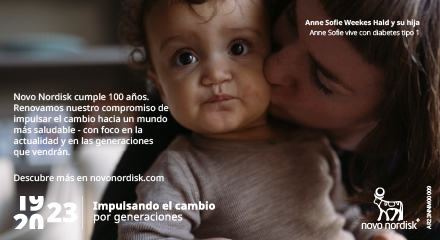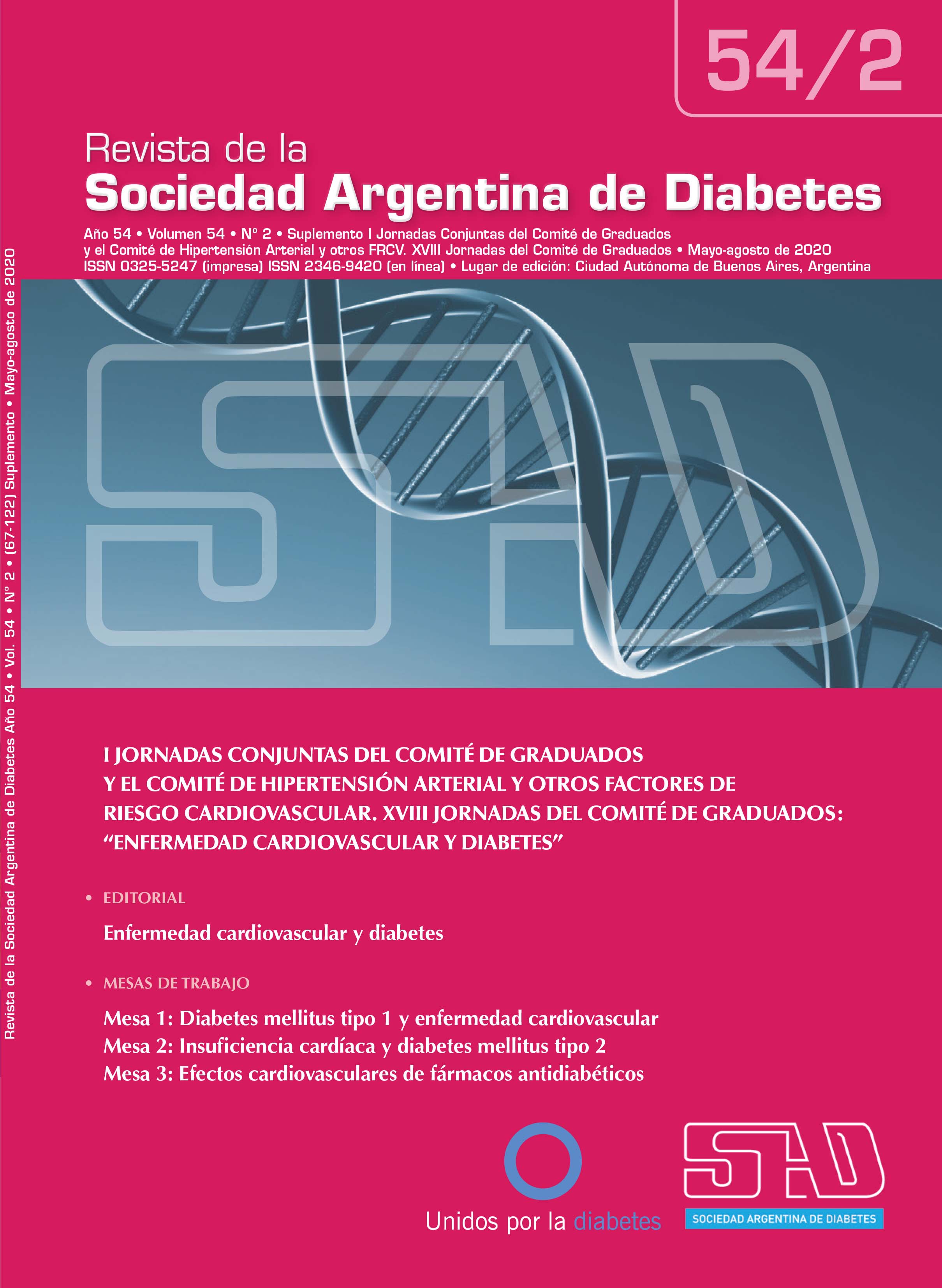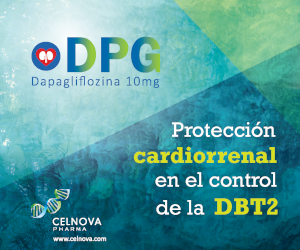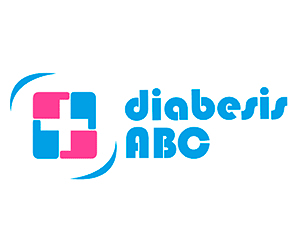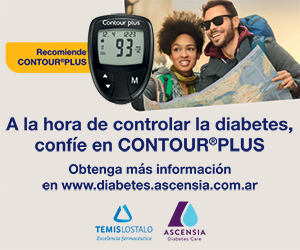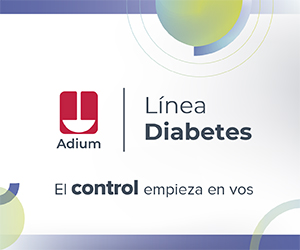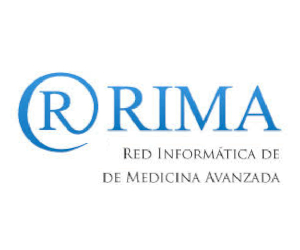Mesa 1: Diabetes mellitus tipo 1 y enfermedad cardiovascular
DOI:
https://doi.org/10.47196/diab.v54i2Sup.251Palabras clave:
enfermedad cardiovascular, diabetes mellitus tipo 1, tratamiento, diagnóstico, control glucémicoResumen
La principal causa de muerte en personas con diabetes mellitus tipo 1 (DM1) es de origen cardiovascular (CV). La duración de la DM1 es uno de los predictores más importantes para infarto agudo de miocardio (IAM), junto con el colesterol de lipoproteínas de baja densidad (cLDL) y HbA1c. El desarrollo de DM1 antes de los 10 años de edad se asocia con un riesgo 90 veces mayor de IAM en mujeres. En la DM1 habría una mayor contribución de un estado de inflamación sistémica de bajo de grado.
La combinación de electrocardiograma de ejercicio y una técnica de imagen proporciona valor diagnóstico para la detección de isquemia miocárdica y pronóstico. La evaluación del riesgo CV en el adulto mayor debe ser individualizado y categorizarlo según funcionalidad y comorbilidades a fin de fijar objetivos de control de factores glucémicos y no glucémicos personalizados.
Citas
I. Orchard TJ, Costacou T, Kretowski A. et al. Type 1 diabetes and coronary artery disease. Diabetes Care 2006; 29:2528-2538.
II. Lind M, Svensson AM, Kosiborod M, et al. Glycemic control and excess mortality in type 1 diabetes. NEJM 2014; 371:1972-82.
III. Pober D, Galderisi A, HuiJuan L, et al. Glycemic control, cardiac autoimmunity and long-term risk of cardiovascular disease in type 1 diabetes mellitus: A DCCT/EDIC cohort-based study. Circulation 2018; 138:00-14.
IV. Miller RG, Costacou T, Orchard TJ, et al. Risk factor modeling for cardiovascular disease in type 1 diabetes in the Pittsburgh Epidemiology of Diabetes Complications (EDC) Study. A comparison to the Diabetes Control and Complications Trial/ Epidemiology of Diabetes Interventions and Complications Study. Diabetes 2018;1-27.
V. Soedamah-Muthu SS, Fuller JH, Mulnier HE, et al. High risk of cardiovascular disease in patients with type 1 diabetes in the U.K.: a cohort study using the general practice research database. Diabetes Care 2006; 29:798-804.
VI. Secrest AM, Becker DJ, Kelsey SF, Laporte RE, Orchard TJ. Cause-specific mortality trends in a large population-based cohort with longstanding childhood-onset type 1 diabetes. Diabetes 2010; 59:3216-3222.
VII. De Ferranti SD, de Boer IH, Fonseca V, et al. Type 1 Diabetes mellitus and cardiovascular disease. A scientific statement from the American Heart Association and American Diabetes Association. Diabetes Care 2014; 37(10):2843-2863. Doi:10.2337/dc14-1720.
VIII. Rawshani A, Sattar N, Franzén S, et al. Excess mortality and cardiovascular disease in young adults with type 1 diabetes in relation to age at onset: a nationwide, register-based cohort study. Lancet 2018; 392:477-86. Doi:10.1016/S0140-6736(18)31506-X.
IX. Rawshani A, Sattar N, Franzen S, et al. Relative prognostic importance and optimal levels of risk factors for mortality and cardiovascular outcomes in type 1 diabetes mellitus. Circulation 2019;139(6):1900-1012. Doi:10.1161/CIRCULATIONAHA.118.037454.
X. Schofield J, Ho J, Soran H. Cardiovascular risk in type 1 diabetes mellitus. Diabetes Ther 2019; 10:773-789. Doi:10.1007/s13300-019-0612.
XI. Cosentino F, Grant PJ, Aboyans V, et al. ESC Guidelines on diabetes, pre-diabetes and cardiovascular diseases developed in collaboration with the EASD. Eur Heart J 2020; 41(2):255-323. Doi:10.1093/eurheartj/ehz486.
XII. Htay T, Soe K, López-Pérez A, et al. Mortality and cardiovascular disease in type 1 and type 2 diabetes. Curr Cardiol Rep. 2019;21(6):45. Published 2019 Apr 22. Doi:10.1007/s11886-019-1133-9.
XIII. Huxley RR, Peters SA, Mishra GD, et al. Risk of all-cause mortality and vascular events in women versus men with type 1 diabetes: a systematic review and meta-analysis. Lancet Diabetes Endocrinol 2015; 3:198-206. Doi:10.1016/S2213-8587(14)70248-7.
XIV. Peters SA, Huxley RR, Woodward M, et al. Diabetes as risk factor for incident coronary heart disease in women compared with men: a systematic review and meta-analysis of 64 cohorts including 858,507 individuals and 28,203 coronary events. Diabetologia 2014; 57:1542-51. Doi:10.1007/s00125-014-3260-6.
XV. Roy M, Rendas-Baum R, Skurnick J. Mortality in African-Americans with type 1 diabetes: the New Jersey 725. Diabet Med. 2006; 23(6):698-706. Doi:10.1111/j.1464-5491.2006.01901.x.
XVI. Bosnyak Z, Nishimura R, Hagan-Hughes M, et al. Excess mortality in black compared with white patients with type 1 diabetes: an examination of underlying causes. Diabet Med 2005; 22:1636-1641.
XVII. Walsh MG, Zgibor J, Borch-Johnsen K, Orchard TJ; DiaComp Investigators. A multinational assessment of complications in type 1 diabetes: the DiaMond substudy of complications (DiaComp) level 1. Diab Vasc Dis Res 2006; 3:84-92.
XVIII. Nathan DA, Cleary PA, Jye-Yu MS, Backlund C, et al. Intensive diabetes treatment and cardiovascular disease in patients with type 1 diabetes. NEJM 2005, 353;2643-2653. Doi:10.1056/NEJMoa052187.
XIX. Soedamah-Muthu SS, Chaturvedi N,Witte DR, Stevens LK, Porta M. et al. Relationship between risk factors and mortality in type 1 diabetic patients in Europe. The EURODIAB Prospective Complications Study (PCS). Diabetes Care 2008; 31(7):1360-1366. Doi:10.2337/dc08-0107.
XX. Klein BE, Klein R, McBride PE, Cruickshanks KJ, et al. Cardiovascular disease, mortality, and retinal microvascular characteristics in type 1 diabetes. Arch Intern Med 2004; 164(17):1917-1924. Doi:10.1001/archinte.164.17.1917.
XXI. Dabelea D, Kinney G, Snell-Bergeon JK, Hokanson JE, et al. Effect of type 1 diabetes on the gender difference in coronary artery calcification: a role for insulin resistance? The Coronary Artery Calcification in Type 1 Diabetes (CACTI) Study. Diabetes. 2003; 52(11):2833-2839. doi:10.2337/diabetes.52.11.2833.
XXII. Pease AJ, Earnest A, Nanayakkara N, Ranashina S et al. Burden of cardiovascular risk factors and disease in type 1 diabetes. Results of the Australian National Diabetes Audit (ANDA). Cardiovasc Diabetol. 2018;17(1):77. Published 2018 Jun 2. Doi:10.1186/s12933-018-0726-8 .
XXIII. Lind M, Pivodi A, Svensson AM, Ólafsdóttir AF, et al. HbA1c level as a risk factor for retinopathy and nephropathy in children and adults with type 1 diabetes: Swedish population based cohort study. British Medical Journal; 2019.366:l4894. Published 2019 Aug 28. Doi:10.1136/bmj.l4894.
XXIV. Kiss Z, Rokszin G, Abonyi-Tóth Z, Jermendy G, et al. Young adult patients with type 1 diabetes have a higher risk of mortality than those of similar age with type 2 diabetes: A nationwide analysis in Hungary. Diabetes Metab Res Rev 2019; 35:e3190.
XXV. Livingstone SJ, Looker HC, Hothersall EJ, Wild SH. Risk of cardiovascular disease and total mortality in adults with type 1 diabetes: Scottish Registry Linkage Study. PLoS Medicine 2012; 9(10): e1001321. Doi:10.1371/journal.pmed.1001321.
XXVI. Steineck I, Cederholm J, Eliasson B, Rawshani A, et al. Insulin pump therapy, multiple daily injections, and cardiovascular mortality in 18168 people with type 1 diabetes: observational study. British Medical Journal 2015; 350:h3234. Published 2015 Jun 22. Doi:10.1136/bmj.h3234.
XXVII. Brown RA, Shantsila E, Varma C, et al. Current understanding of atherogenesis. Am J Med. 2017; 130(3):268-282. Doi:10.1016/j.amjmed.2016.10.022.
XXVIII. Costacou T, Lopes-Virella MF, Zgibor JC, et al. Markers of endothelial dysfunction in the prediction of coronary artery disease in type 1 diabetes: the Pittsburgh Epidemiology of Diabetes Complications Study. J Dia Complic 2005; 19:183-193.
XXIX. Faxon D, Fuster V, Libby P, et al. Atherosclerotic vascular disease conference. Circ 2004; 109 (21):2617-2625.
XXX. Cooper ME, El-Osta A, Allen TJ, et al; Metabolic Karma. The atherogenic legacy of diabetes: The 2017 Edwin Bierman Award Lecture. Diab 2018; 67:785-790.
XXXI. Pechlivani N, Ajjan RA. Thrombosis and vascular inflammation in diabetes: mechanisms and potential therapeutic targets. Front Cardiovasc Med 2018; 19,5:1. Doi: 10.3389/fcvm.2018.00001.
XXXII. Costacou T, Ferrell RE, Orchard TJ et al. Haptoglobin genotype: a determinant of cardiovascular complication risk in type 1 diabetes. Diabetes 2008; 57:1702-1706.
XXXIII. Reddy MA, Zhang E, Natarajan R. Epigenetic mechanisms in diabetic complications and metabolic memory. Diabetologia 2015; 58:443-455.
XXXIV. Khunti K, Davies M, Majeed A, et al. Hypoglycemia and risk of cardiovascular disease and all-cause mortality in insulintreated people with type 1 and type 2 diabetes: a cohort study. Diabetes Care 2015; 38(2):316-22.
XXXV. Mellbin LG, Ryden L, et al. Does hypoglycaemia increase the risk of cardiovascular events? A report from the ORIGIN trial. Eur Heart J 2013; 34(40):3137-44.
XXXVI. Hoffman RP, Dye AS, Huang H, et al. Glycemic variability predicts inflammation in adolescents with type 1 diabetes. J Pediatr Endocrinol Metab 2016; 29(10):1129-1133.
XXXVII. Larkin ME, Backlund JY, Cleary P, et al. Disparity in management of diabetes and coronary heart disease risk factors by sex in DCCT/EDIC. Diabet Med 2010; 27(4):451-8.
XXXVIII. Petrie D, Lung TWC, Rawshani A, et al. Recent trends in life expectancy for people with type 1 diabetes in Sweden. Diabetologia 2016; 59:1167-1176. Doi 10.1007/s00125-016-3914-7.
XXXIX. Thorn LM, Forsblom C, Fagerudd J, Thomas M, et al. Metabolic syndrome in type 1 diabetes. Association with diabetic nephropathy and glycemic control (the FinnDiane study). Diabetes Care 2005; 28 (8):2019-24.
XL. Ing Lee S, Patel M, Jones CM, Narendran P. Cardiovascular disease and type 1 diabetes: prevalence, prediction and management in an ageing population. Ther Adv Chronic Disv 2015 Nov; 6(6): 347-374.
XLI. Kramer CK, Rodrigues TC, Canani LH, et al. Diabetic retinopathy predicts all-cause mortality and cardiovascular events in both type 1 and 2 diabetes: meta-analysis of observational studies. Diabetes Care 2011; 34(5):1238-44. https://doi.org/10.2337/dc11-0079.
XLII. Zobel EH, Hasbak P, Winther SA, et al. Cardiac autonomic function is associated with myocardial flow reserve in type 1 diabetes. Diabete 2019; 68(6):1277-1286.
XLIII. Terrasa S, Buela G, Guenzelovich T, Sigal T, et al. Biomarkers and clinical findings in the prediction of cardiovascular risk: novel risk factors? Disponible en: https://www.researchgate.net/publication/282133785_Marcadores_serologicos_y_clinicos_en_la_prediccion_del_riesgo_cardiovascular_nuevos_factores_de_riesgo-.
XLIV. Ortega E, Amor AJ, Rojo-Martínez G, Castell C, et al. Enfermedad cardiovascular en pacientes con diabetes mellitus tipo 1 y tipo 2 en España. Medicina Clínica (Barcelona) 2014; 3160:1-6.
XLV. Michael E. Vascular disease in the lower limb in type 1 diabetes. Cardiovascular Endocrinology and Metabolism 2019; 8:39-46.
XLVI. De la Hera JM, García-Ruiz JM, Delgado E. Diabetes y cribado de enfermedad coronaria: ¿dónde centramos el esfuerzo? Revista Española Cardiología 2015; 68:830-833.
XLVII. Layerle B, Vignolo W. Tamizaje de cardiopatía isquémica y revascularización en pacientes diabéticos con enfermedad arterial coronaria estable. Articulo de revisión. Revista Uruguaya de Cardiología 2017; Vol 32, 2:158-172. Disponible en: http://www.scielo.edu.uy/scielo.php?script=sci_arttext&pid=S1688-04202017000200158&lng=es.
XLVIII. Levre MM, Moulin P, Thivolet C, Rodier M, Rigalleau V, Penfornis A, et all. Detection of silent myocardial ischemia in asymptomatic patients with diabetes: results of randomized Trial and metanalysis assessing in efectiveness of systematic screening. Trials 2011; 26:12-23.
XLIX. Marso SP, Hiatt WR. Peripheral arterial disease in patients with diabetes. Journal of the American College of Cardiology 2006; 47(5):921-929.
L. Tehan PE, Chuter VH, et al. How sensitive and specific is continous- wave Doppler for detecting peripheral arterial disease in people with and without diabetes? A cross-sectional study. Diabetes & Vascular Disease Research 2018;15:396-401.
LI. Buitrago-Ramirez F, Pérez-Caballero FL. Arteriopatia periférica. Formación Médica Continuada en Atención Primaria 2013; 20(5):246-255.
LII. Sundquist K, Li X. Type 1 diabetes as a risk factor for stroke in men and women aged 15-49: a nationwide study from Sweden. Diabet Med 2006; 23:1261-1267. doi:10.1111/j.1464-5491.2006.01959.x.
LIII. Putaala R, Liebkind D, et al. Diabetes mellitus and ischemic stroke in the young. Neurología 2011; 76:1831-1837. Doi:10.1212/WNL.0b013e31821cccc2.
LIV. Chen R, Ovbiagele B, et al. Diabetes and stroke: epidemiology, pathophysiology, pharmaceuticals and outcomes. Am J Med Sci 2016 April; 351(4):380-386.
LV. Janghorbani M, Hu FB, et al. Prospective study of type 1 and type 2 diabetes and risk of stroke subtypes. Diabetes Care 2007; 30:1730-1735. Doi:10.2337/dc06-236.
LVI. Heden-Stahl C, Lind M, Svensson AM, et al. Glycaemic control and excess risk of ischaemic and haemorrhagic stroke in patients with type 1 diabetes: a cohort study of 33 453 patients. J Intern Med 2017 Mar; 281(3):261-272. Doi: 10.1111/joim.12572.
LVII. Hägg S, Thorn LM. Different risk factor profiles for ischemic and hemorrhagic. stroke in type 1 diabetes mellitus. Stroke.2014;45:2558-2562.
LVIII. Hagg-Holmberg S, Thorn LM, Forsblom CM et al. Prognosis and its predictors after incident stroke in patients with type 1 diabetes. Diabetes Care 2017;40:1394-1400.
LIX. Hagg‑Holmberg S, Dahlström EH, Forsblom CM, et al. The role of blood pressure in risk of ischemic and hemorrhagic stroke in type 1 diabetes. Cardiovasc Diabetol 2019; 18:88.
LX. Hagg S, Lena M. Thorn, Putaala J, et al. Incidence of stroke according to presence of diabetic nephropathy and severe diabetic retinopathy in patients with type 1 diabetes. Diabetes Care 2013; 36:4140-4146.
LXI. Seferovic PM, Paulus WJ. Clinical diabetic cardiomyopathy: a two-faced disease with restrictive and dilated phenotypes. European Heart Journal 2015; 36:1718-1727. Doi:10.1093/eurheartj/ehv134.
LXII. Hölscher ME, Bode C, Bugger H. Diabetic cardiomyopathy: Does the type of diabetes matter? Int J Mol Sci 2016; 17: 2136.
LXIII. Lind M, Bounias I,Olsson M, Gudbjörnsdottir S, et al. Glycaemic control and incidence of heart failure in 2. 985 patients with type 1 diabetes: an observational study. Lancet 2011; 378:140-46.
LXIV. Gulsin GS, Athithan L, McCann GP. Diabetic cardiomyopathy: prevalence, determinants and potential treatments. Ther Adv Endocrinol Metab 2019; Vol. 10: 1-21.
LXV. American Diabetes Association. Standards of Medical Care in Diabetes. Chapter 10 Cardiovascular disease and risk management. Diabetes Care 2019; 42(S1): S103-123. Doi:10.2337/dc19-S010.
LXVI. American Diabetes Association. Standards of Medical Care in Diabetes. Chapter 5: Lifestyle management: Standards of Medical Care in Diabetes 2019. Diabetes Care. 2019; 42(Suppl 1):S46-S60. Doi:10.2337/dc19-S00.
LXVII. Gillespie SJ, Kulkarni KD, Daly AE. Using carbohydrate counting in diabetes clinical practice. J Am Diet Assoc 1998; 98:897-905.
LXVIII. Vaz EC, Porfírio GJM, Nunes HRC, Nunes-Nogueira VDS. Effectiveness and safety of carbohydrate counting in the management of adult patients with type 1 diabetes mellitus: a systematic review and meta-analysis. Arch Endocrinol Metab 2018 Jun; 62(3):337-345. Doi:10.20945/2359-3997000000045.
LXIX. Colberg S, Laan R, Dassau E, Kerr D. Physical activity and type 1 diabetes. J Diabetes Sci Technol 2015 May; 9(3): 609-618.
LXX. Ciccichitti A, et al. Actividad física y control glucémico, complicaciones agudas, complicaciones microvasculares y factores de riesgo cardiovascular en adultos con diabetes tipo 1. Rev ALAD 2019; 9:111-117. Doi: 10.24875/ALAD.19000377.
LXXI. Quirk H, Blake H, Tennyson R, Randell TL, Glazebrook C. Physical activity interventions in children and young people with type 1 diabetes mellitus: a systematic review with meta-analysis. Diabet Med 2014 Oct; 31(1):1163-1173. Doi:10.1111/dme.12531.
LXXII. Zubizarreta-López M, Hernández-Mezquita MA, Miralles-García JM, Barrieco-Ferrero M. Tobacco and diabetes: clinical relevance and approach to smoking cessation in diabetic smokers. Endocrinología, Diabetes y Nutrición 2017; 64(4): 221-231. Doi:10.1016/j.endinu.2017.02.010.
LXXIII. Fisher L, Hessler DM, Polonsky WH, et al. Prevalence of depression in type 1 diabetes and the problem of over-diagnosis. Diabet Med 2016 Nov; 33(11):1590-1597. Doi:10.1111/dme.12973.
LXXIV. Zhu Z, Zhang F, Liu Y, et al. Relationship of Obstructive Sleep Apnoea with Diabetic Retinopathy: a meta-Analysis. Biomed Res Int. 2017; 2017:4737064. Doi:10.1155/2017/4737064.
LXXV. Khouja T, Miller RG, Moore PA, Orchard TJ, Costacou T. Periodontal disease, smoking, cardiovascular complications and mortality in type 1 diabetes. Journal of Diabetes and Its Complications 2019; 33:603-609. Doi:10.1016/j.jdiacomp.2019.05.025.
LXXVI. Calixto OJ, Anaya JM. Socioeconomic status. The relationship with health and autoimmune diseases. Autoimmun Rev 2014; 13:641-54.
LXXVII. Katz M, Guo Z, Cheema A, Laffel L. Management of cardiovascular disease risk in teens with type 1 diabetes: perspectives of teens with and without dyslipemia and parents. Pediatrics Diabetes 2019; 20:210-216.
LXXVIII. Giannopoulou E, Doundoulakis I, Antza C, Christoforidis A, et al. Subclinical arterial damage in children and adolescents with type 1 diabetes: a systematic review and meta-analysis. Pediatric Diabetes 2019; 20:668-677.
LXXIX. American Diabetes Association. Children and adolescentes: Standars of Medical Care in Diabetes. Diabetes Care 2019; 42(S1):S148-S164.
LXXX. Consenso Argentino de Hipertensión Arterial 2018. Sociedad Argentina de Hipertensión Arterial. Sociedad Argentina de Cardiología y Federación Argentina 2018. Disponible en: https://www.sac.org.ar/wp-content/uploads/2018/08/consenso-argentino-de-hipertension-arterial-2018.pdf.
LXXXI. Elikir G, Cuneo C, Lorenzatti A, et al. Guía de práctica clínica de la Sociedad Argentina de Lípidos sobre Diagnóstico y tratamiento de las dislipemias en adultos 2019. Sociedad Argentina de Lípidos 2019. 1º Edición. Disponible en: https://7be948bb-6c55-43c7-b002-dd43225d11c9.filesusr.com/ugd/c4ab3f_2ce3bebd47774974855fc7e13ee1b8f7.pdf.
LXXXII. Braffet B, Dagogo-Jack S, Bebu I, et al; DCCT/EDIC Research Group. Association of insulin dose, cardimetabolic risk factors, and cardiovascular disease in type 1 diabetes during 30 years of follow-up in the DCCT/EDIC Study. Diabetes Care 2019; 42(4):657-664.
LXXXIII. Genuth S, Baclund J, Bayless M, et al. Effects of prior intensive versus conventional therapy and history of glycemia on cardiac function in type 1 diabetes in the DCC/EDIC. Diabetes 2013; 62(10):3561-3569.
LXXXIV. Aviabile N, Banka A, Fonseca V. Glucose control and cardiovascular outcomes in individual with diabetes mellitus, lesson learn from the megatrials. Heart Failure Clin 8. 2012; 513-522. Doi:10.1016/j.hfc.2012.06.009.
LXXXV. What role for metformin in type 1 diabetes. Drug and Therapeutics Bulletin 2018; 56(7):78-80. Doi:10.1136/dtb.2018.7.0645.
LXXXVI. Parsamanesh N, Moossavi M, Bahrami A, et al. Therapeutic potential of curcumin in diabetic complications. Pharmacological Research 2018; 136:181-193.
LXXXVII. Abdelsamia E, Khaleel S, Balah A, Baky N. Curcumin augments the cardiprotective effec of meformin in an experimental model of ype I diabetes mellitus. Impact of Nrf2/HO-1 and JAK/STAT patways. Biomedicine & Pharmacotherapy 2019; 109:2136-2144.
LXXXVIII. Doggrell S. Do glucagon-like peptide-1 recepor (GLP-1R) agonist have potential as adjuncts in the treatment of type 1 diabetes). Expert Opinion on Pharmacotherary 2018; 19:1655-1661.
LXXXIX. Rovira MG, et al. Recomendaciones para el manejo de las pacientes con diabetes pregestacional. Revista de la Sociedad Argentina de Diabetes 2017; 51 (4)153-174.
XC. Report of the National High Blood Pressure Education Program Working Group on High Blood Pressure in Pregnancy. Am J Obstet Gynecol 2000;183(1):S1-S22.
XCI. Dunne FP, Avalos G, Durkan M, et al. Atlantic Dip: pregnancy outcome for women with pregestational diabetes along the Irish Atlantic Seaboard. Diabetes Care 2009; 32: 1205-1206.
XCII. Xiang L, Wang Y, Lu G, Huang Q. Association of the presence of microangiopathy with adverse pregnancy outcome in type 1 diabetes: A meta-analysis. Taiwanese Journal of Obstetrics & Gynecology 2018; 57:659-664.
XCIII. Sacks KN, Friger M, et al. Prenatal exposure to preeclampsia as an independent risk factor for long-term cardiovascular morbidity of the offspring. Pregnancy Hypertension 2018; 13:181-186.
XCIV. Rodríguez BL, Fujimoto WY, Mayer-Davis EJ, et al. Prevalence of cardiovascular disease risk factors in U.S. children and adolescents with diabetes: the SEARCH for Diabetes in Youth Study. Diabetes Care 2006; 29:1891-1896.
XCV. Schwab KO, Doerfer J, Hecker W, et al. DPV Initiative of the German Working Group for Pediatric Diabetology. Spectrum and prevalence of atherogenic risk factors in 27,358 children, adolescents, and young adults with type 1 diabetes: cross-sectional data from the German diabetes documentation and quality management system (DPV). Diabetes Care 2006; 29:218-225.
XCVI. Margeirsdottir HD, Larsen JR, Brunborg C; Norwegian Study Group for Childhood Diabetes. High prevalence of cardiovascular risk factors in children and adolescents with type 1 diabetes: a population-based study. Diabetologia 2008; 51:554-561.
XCVII. Robert Dalla Pozza R, Bechtold S, Bonfig W, et al. Age of onset of type 1 diabetes in children and carotid intima medial thickness. J Clin Endocrinol Metab 2007; 92: 2053-2057.
XCVIII. Urbina EM, Wadwa RP, Davis C, et al. Prevalence of increased arterial stiffness in children with type 1 diabetes mellitus differs by measurement site and sex: the SEARCH for Diabetes in Youth Study. J Pediatr 2010; 156:731-737.
XCIX. Sepulveda-Fusaro MF, Santos Zanini JLS, Silva IN. Increased carotid intima‑media thickness in Brazilian adolescents with type 1 diabetes mellitus Diabetol Metab Syndr 2016; 8:74. Published 2016 Nov 11. Doi:10.1186/s13098-016-0190-0.
C. Babar GS, Zidan H, et al. Impaired endothelial function in preadolescent children with type 1 diabetes. Diabetes Care 2011; 34:681-685.
CI. Parikh A, Sochett EB, McCrindle BW, Dipchand A, Daneman A, Daneman D. Carotid artery distensibility and cardiac function in adolescents with type 1 diabetes. J Pediatr 2000; 137:465-469.
CII. Donaghue KC, Marcovecchio ML, Wadwa RP, et al. ISPAD Clinical Practice Consensus Guidelines 2018: Microvascular and macrovascular complications in children and adolescents. Pediatric Diabetes October 2018; 19 (Suppl. 27): 262-274.
CIII. Guías de práctica clínica para el manejo de la diabetes mellitus tipo 1. 2011. Sociedad Argentina de Diabetes.
CIV. Araujo MB, Casavalle P, et al. Consenso sobre manejo de las dislipidemias en pediatría. Arch Argent Pediatr 2015; 113(2):177-186.
CV. Marcovecchio ML, Chiesa ST, Bond S, et al. ACE inhibitors and statins in adolescents with type 1 diabetes. NEJM 2017; 377:1733-1745.
CVI. Marcovecchio ML, Chiesa ST, Armitage J, et al. Renal and cardiovascular risk according to tertiles of urinary albumin-to-creatinine ratio: the adolescent type 1 diabetes cardio-renal intervention trial (AdDIT). Diabetes Care 2018; 41:1963-1969.
CVII. Pomares L, Braschi M, et al. Lineamientos para la atención del consumo episódico excesivo de alcohol en adolescentes. Ministerio de Salud, Argentina. 2018. Disponible en: https://toxicologia.org.ar/wp-content/uploads/2018/05/lineamientos-atencion-alcohol-en-adolescentes1.pdf.
CVIII. Evans-Cheung TC, Bodansky HJ, Parslow, RC. Early deaths from ischemic heart disease in childhood-onset type 1 diabetes. Archives of Disease in Childhood 2018; 103(10) 981-983.
CIX. Miller RG, Secrest AM, Sharma RK, Songer TJ, Orchard TJ. Improvements in the life expectancy of type 1 diabetes: the Pittsburgh Epidemiology of Diabetes Complications study cohort. Diabetes 2012; 61: 2987-2992.
CX. Lee SI, Patel M, Jones CM, Narendran P. Cardiovascular disease and type 1 diabetes: prevalence, prediction and management in an ageing population. Ther Adv Chronic Disease 2015; Vol. 6(6) 347-374. Doi:10.1177/2040622315598502.
CXI. Chapman M, Crockett SC, Purvis T, Anderson M, Whittaker P, Bhattacharjee R, et al. Macrovascular disease in the elderly with type 1 diabetes. J Diabetes Metab 2013; 4:8. Doi 10.4172/2155-6156.1000299.
CXII. Soedamah-Muthu S, Fuller-Mulnier HV, Raleigh VS, Lawrenson RA, Colhoun HM. All-cause mortality rates in patients with type 1 diabetes mellitus compared with a non-diabetic population from the UK general practice research database, 1992–1999. Diabetologia 2006; 49: 660-666.
CXIII. LeRoith D, Biessels GJ, Braithwaite S, et al. Treatment of diabetes in older adults: an endocrine society clinical practice guideline. J Clin Endocrinol Metab 2019;104: 1520-1574.
CXIV. Sinclair AJ, Dunning T, Dhatariya K; an International Group of Experts. Clinical guidelines for type 1 diabetes mellitus with an emphasis on older adults: an Executive Summary. Diabet Med 2020; 37(1):53-70. Doi:10.1111/dme.14135.
CXV. Joint British Societies consensus recommendations for the prevention of cardiovascular disease (JBS3). Heart 2014;100:ii1-ii67.
CXVI. Keenan H, Sun JK, Levine J, et al. Residual insulin production and pancreatic cell turnover after 50 years of diabetes: Joslin Medalist Study. Diabetes 2010; 59:2846-2853. Doi:10.2337/db10-0676.
CXVII. Bain SC, Gill GV, Dyer PH, et al. Characteristics of type 1 diabetes of over 50 years duration (the Golden Years Cohort). Diabetic Medicine 2003; 20:808-811. Doi:10.1046/j.1464-5491.2003.01029.x.
CXVIII. Lindahl JP, Hartmann A, Horneland R, et al. Improved patient survival with simultaneous pancreas and kidney transplantation in recipients with diabetic end-stage renal disease. Diabetologia 2013; 56:1364-1371. Doi:10.1007/s00125-013-2888-y.
CXIX. Luan F, Miles C, Cibrik D, Ojo A. Impact of simultaneous pancreas and kidney transplantation on cardiovascular risk factors in patients with type 1 diabetes mellitus. Transplantation Aug 2007; Vol 84 (4):541-544. doi:10.1097/01.tp.0000270617.43811.af.
CXX. Van Dellen D, Worthington J, Mitu-Pretorian OM, et al. Mortality in diabetes: Pancreas transplantation is associated with significant survival benefit. Nephrol Dial Transplant 2013; 28:1315-22. Doi:10.1093/ndt/gfs613.
CXXI. J.M. Maroto Montero Unidad de Rehabilitación Cardíaca. Servicio de Cardiología. Hospital Ramón y Cajal. Madrid. ISBN: 978-84-88336-74-3
CXXII. Piepoli MF, Corra U, Adamopoulos S, et al. Secondary prevention in the clinical management of patients with cardiovascular diseases. Core components, standards and outcome measures for referral and delivery: a policy statement from the cardiac rehabilitation section of the European Association for Cardiovascular Prevention & Rehabilitation. Endorsed by the Committee for Practice Guidelines of the European Society of Cardiology. Eur J Prev Cardiol 2014; 21:664-681.
CXXIII. Piepoli MF, Hoes AW, Agewall S, et al. 2016 European guidelines on cardiovascular disease prevention in clinical practice: The Sixth Joint Task Force of the European Society of Cardiology and Other Societies on Cardiovascular Disease Prevention in Clinical Practice. Eur Heart J 2016; 37:2315-2381.
CXXIV. Suaya JA, Stason WB, Ades PA, et al. Cardiac rehabilitation and survival in older coronary patients. J Am Coll Cardiol 2009; 54:25-33.
CXXV. Anderson L, Oldridge N, Thompson DR, et al. Exercise-based cardiac rehabilitation for coronary heart disease: Cochrane Systematic Review and Meta-Analysis. J Am Coll Cardiol 2016;67:1-12.
CXXVI. Lear SA, Hu W, Rangarajan S, et al. The effect of physical activity on mortality and cardiovascular disease in 130000 people from 17 high-income, middle-income, and low-income countries: the PURE study. Lancet 2017; 390:2643-2654.
CXXVII. Chatziefstratiou A, Fotos NV, et al. The contribution of cardiac rehabilitation program in management of diabetes mellitus: A systematic review. Obesity Medicine 2019; 15. Doi:10.1016/j.obmed.2019.100103.
Descargas
Publicado
Cómo citar
Número
Sección
Licencia

Esta obra está bajo una licencia internacional Creative Commons Atribución-NoComercial-SinDerivadas 4.0.
Dirección Nacional de Derecho de Autor, Exp. N° 5.333.129. Instituto Nacional de la Propiedad Industrial, Marca «Revista de la Sociedad Argentina de Diabetes - Asociación Civil» N° de concesión 2.605.405 y N° de disposición 1.404/13.
La Revista de la SAD está licenciada bajo Licencia Creative Commons Atribución – No Comercial – Sin Obra Derivada 4.0 Internacional.
Por otra parte, la Revista SAD permite que los autores mantengan los derechos de autor sin restricciones.

